Click New Constant
 and select an element of the logic tree.
and select an element of the logic tree.
The Constant Properties dialog
box is displayed.
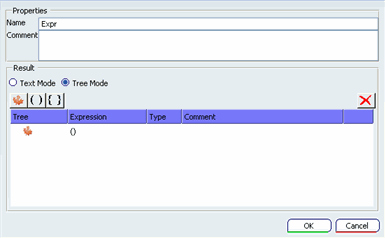
Change the default name of the constant
to Pi.
Enter 3.1416 in the Expression cell.
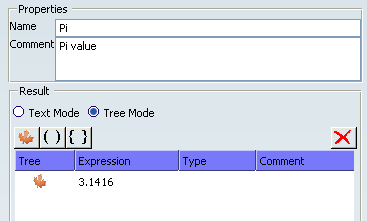
Click OK.
The constant Pi is added to the specification tree.
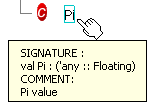
Note:
As we haven't constrained the constant type, the type deduced by the typing mechanism is the class type Floating.
Repeat step 1 to create a new constant.
Change the default name of the constant
to I.
Click Add Element
 .
.
The element is converted into a structure.
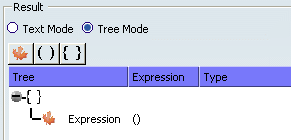
Click Add Element
 to add a second element
to the structure.
to add a second element
to the structure.
Change the default names and fill the expressions as shown
below:
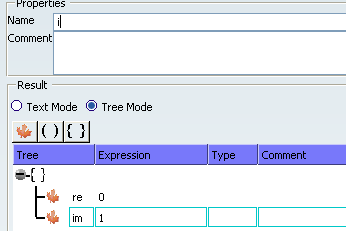
Click OK. The constant
I appears in the tree.

Repeat step 1 to create a new constant.
Select the Text Mode radio button. This mode allows you to enter the constant definition of structured constants in text mode.
See typical examples below:
- Single element: 3.1416
- Tuple: (0,1)
- Structure: {re=0;im=1}
- Single element with constrained type: (3.1416 : float32)
- Tuple with constrained types: ((0 : int32),(1:int32))
- Structure with constrained types: {re=(0 : int32);im=(1:int32)}
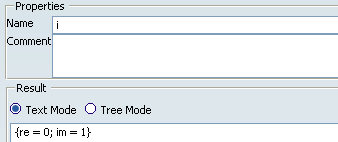
Click Tree Mode. The constant is now displayed in tree mode.